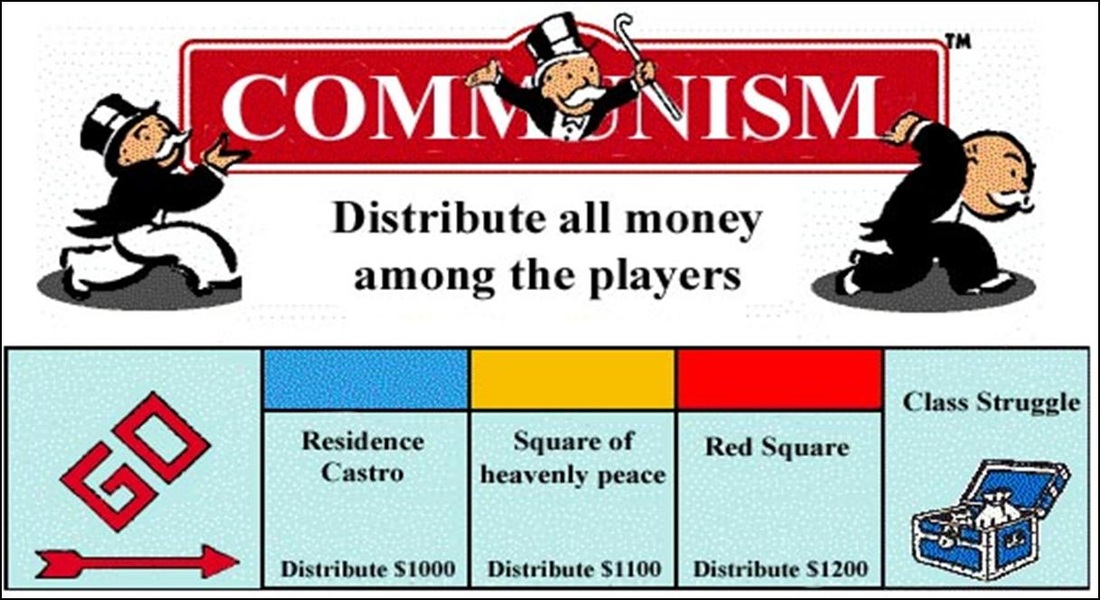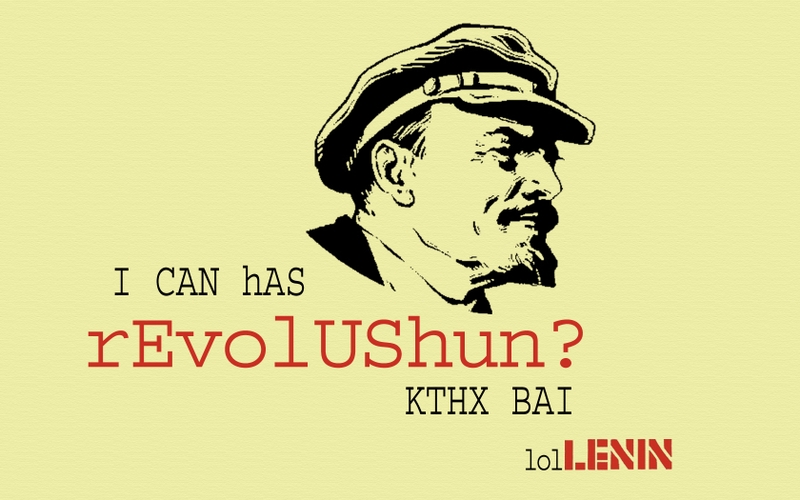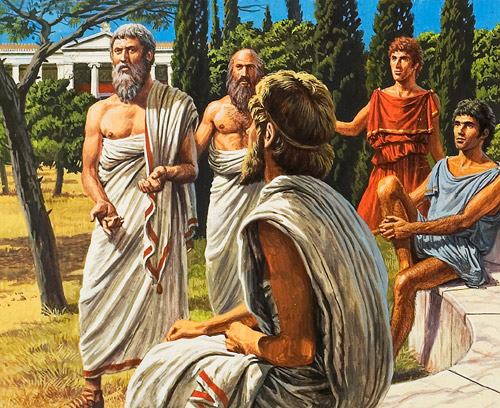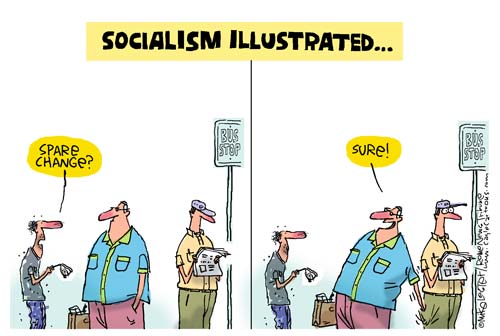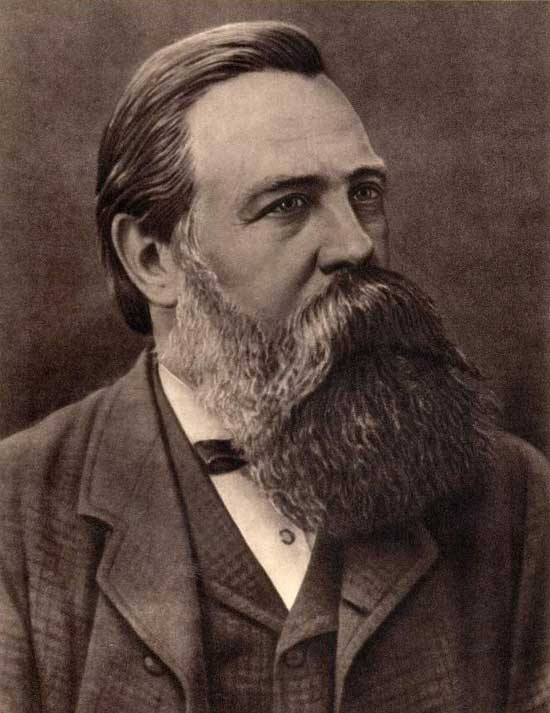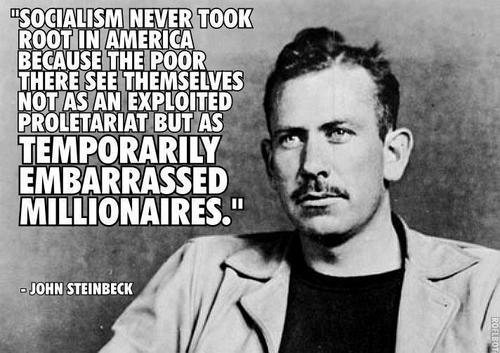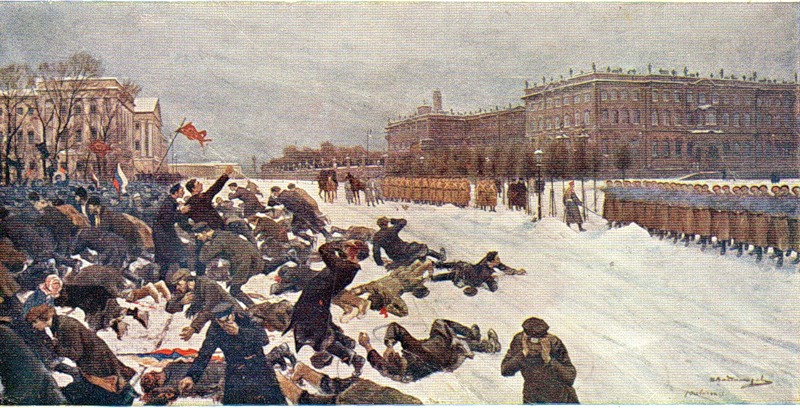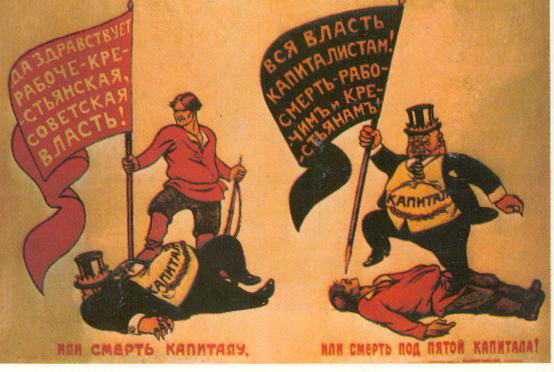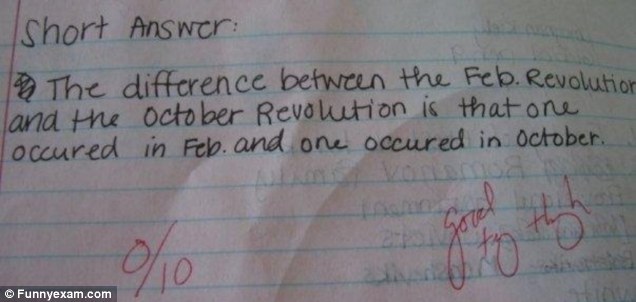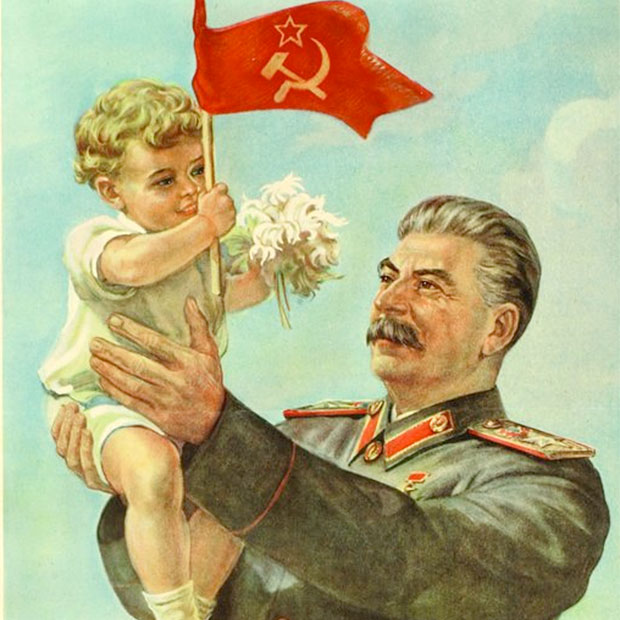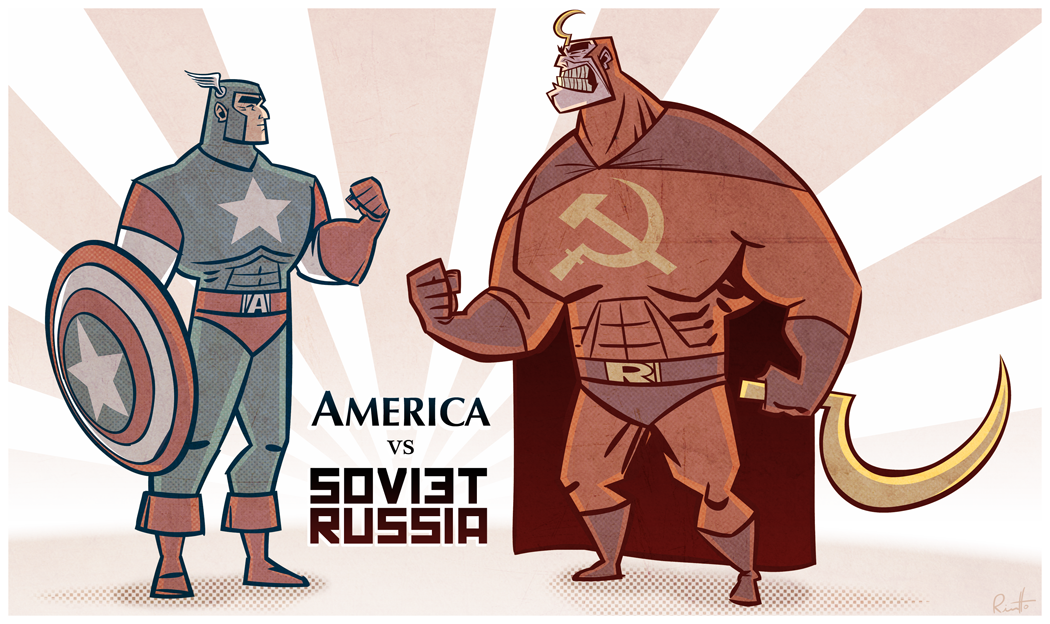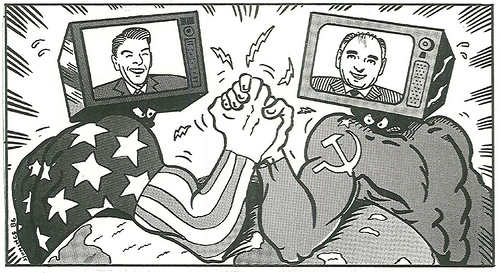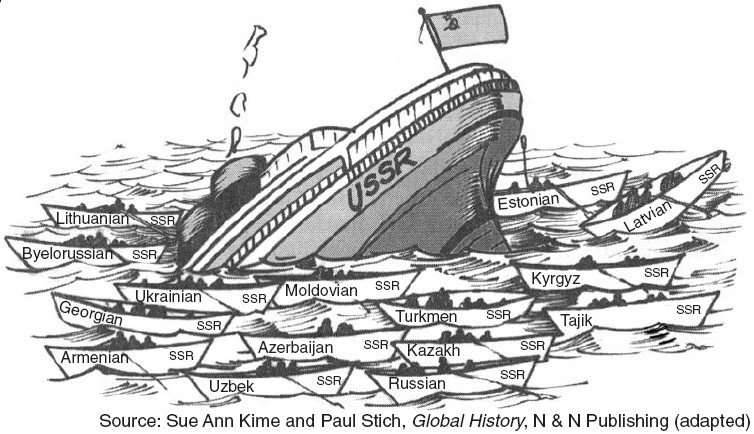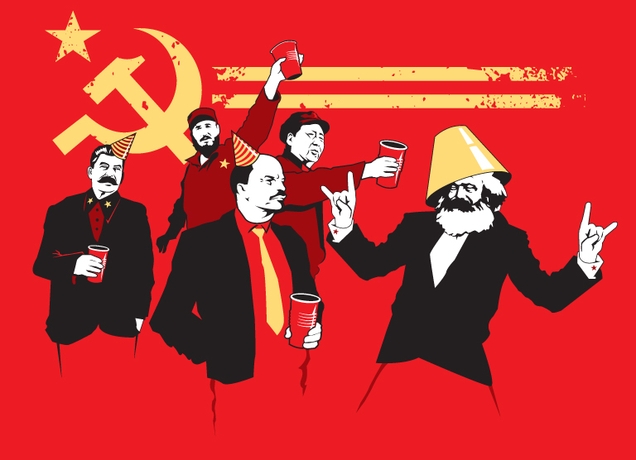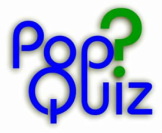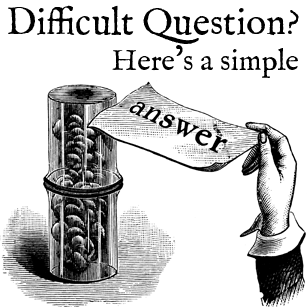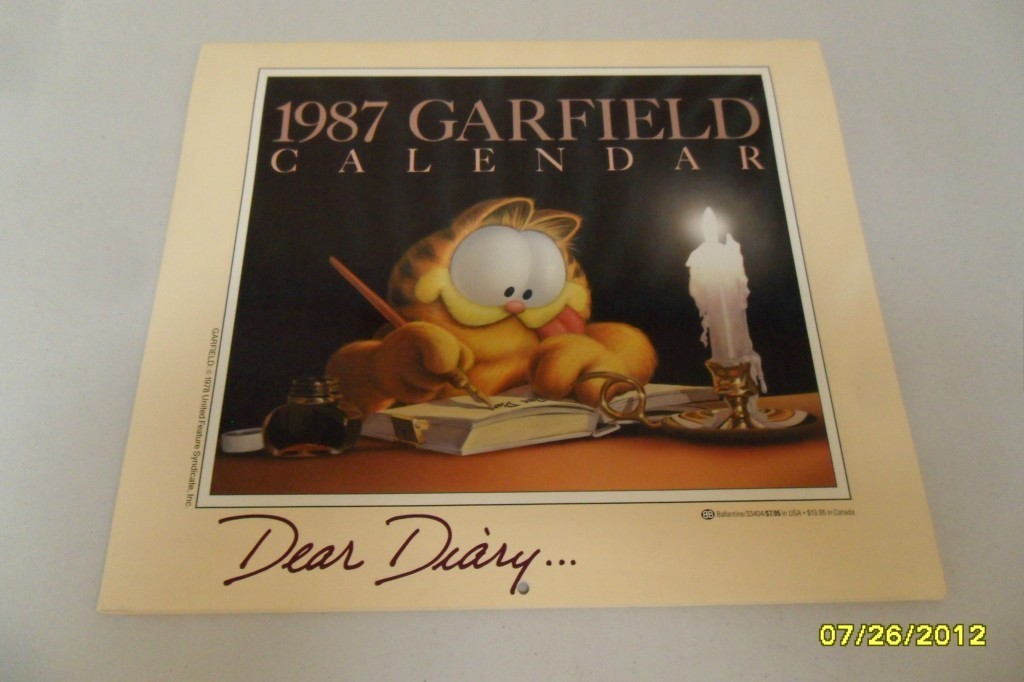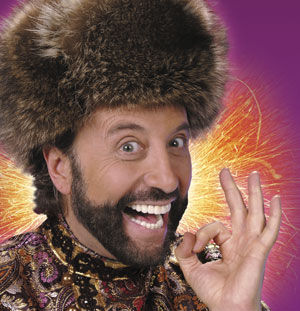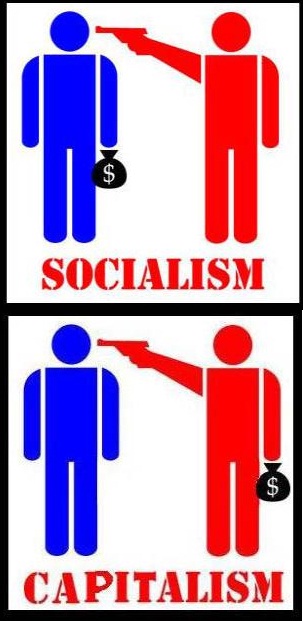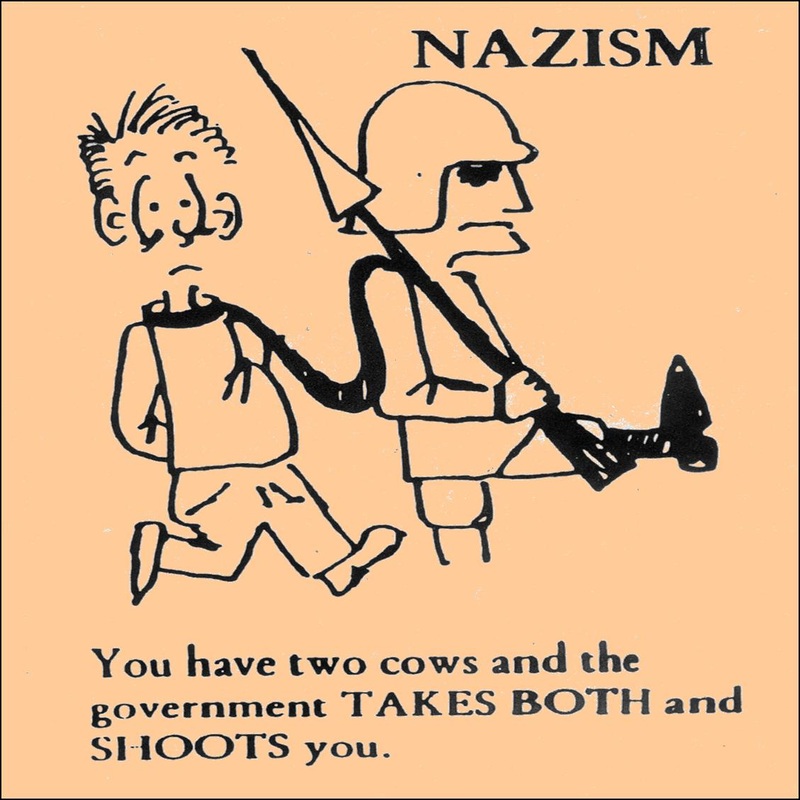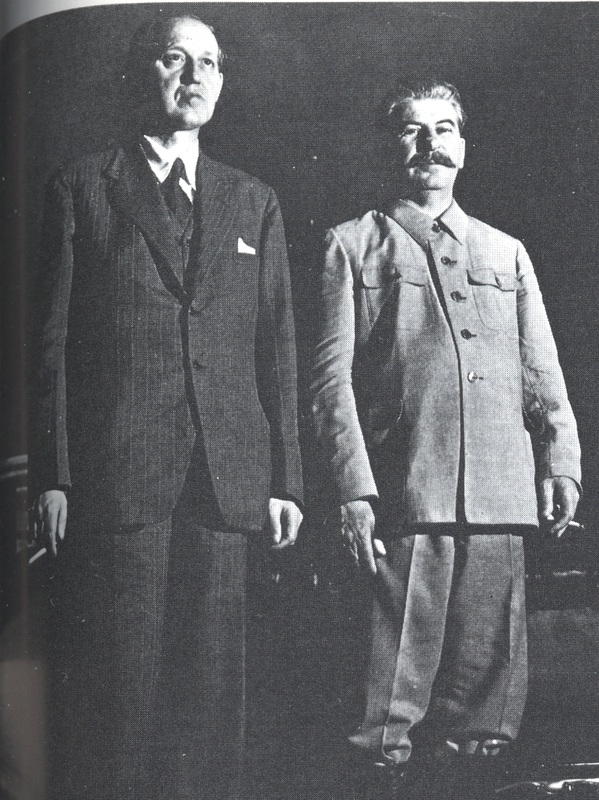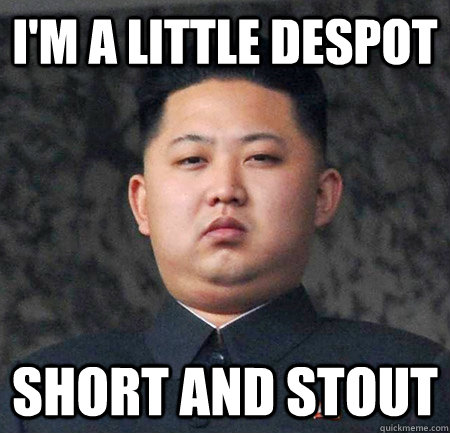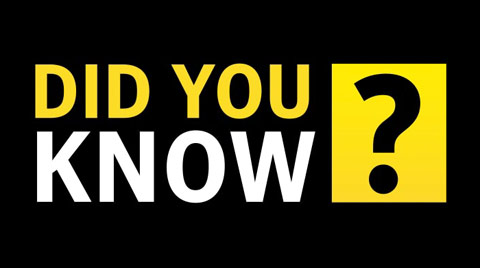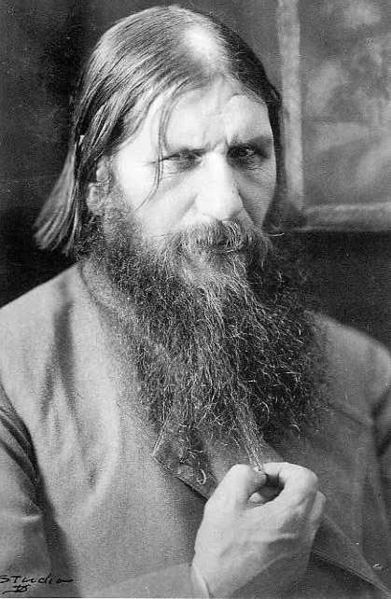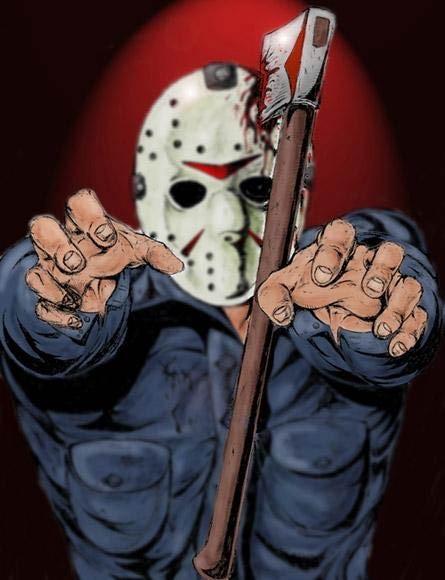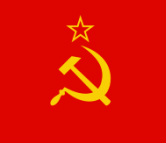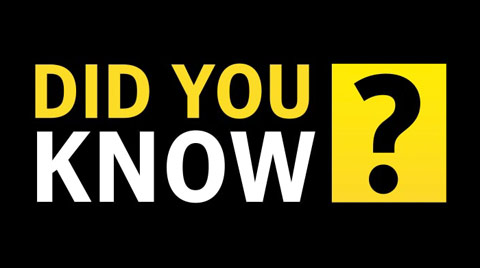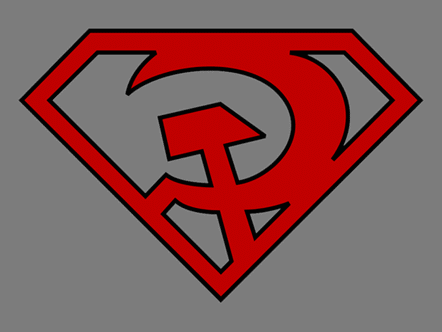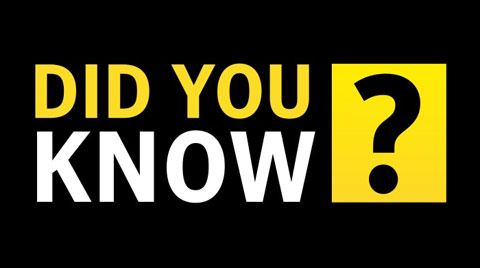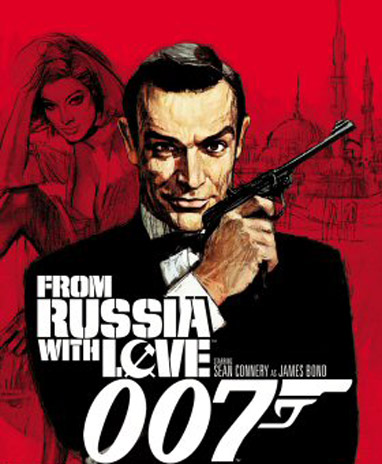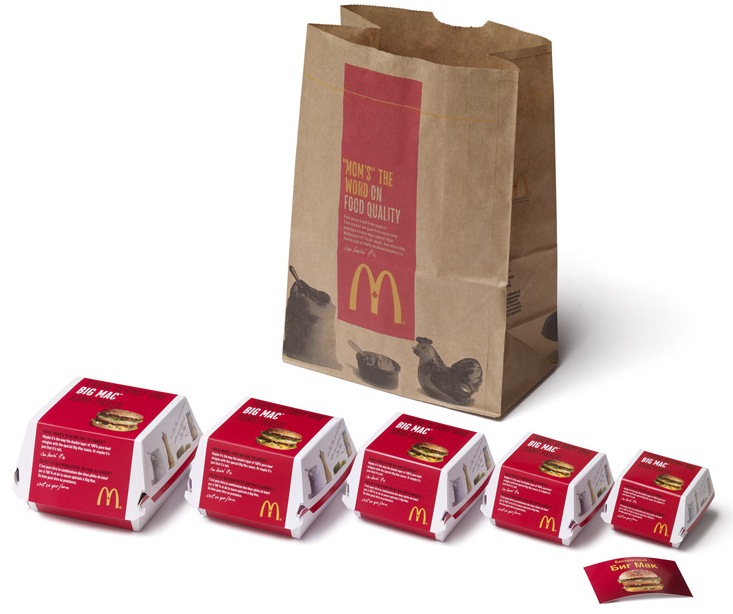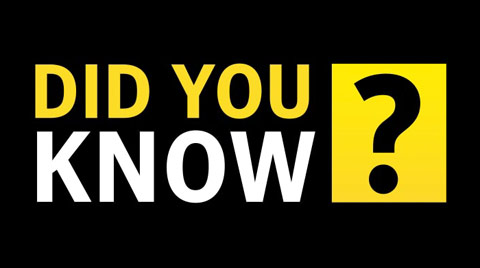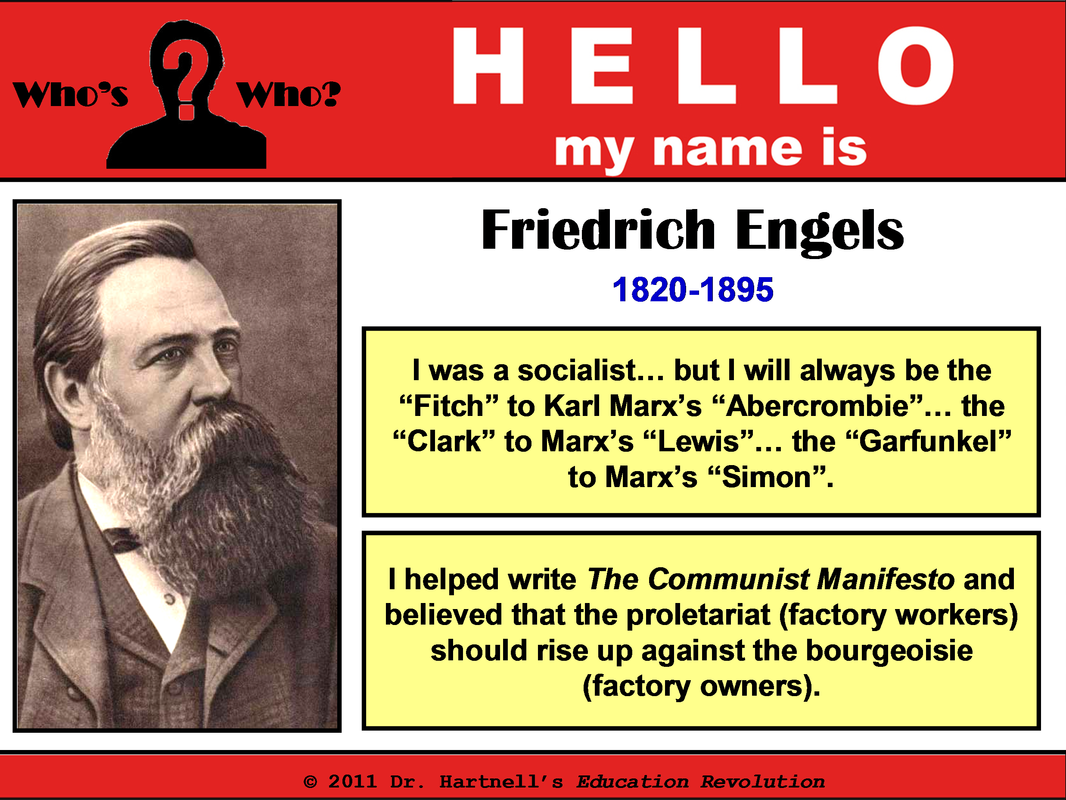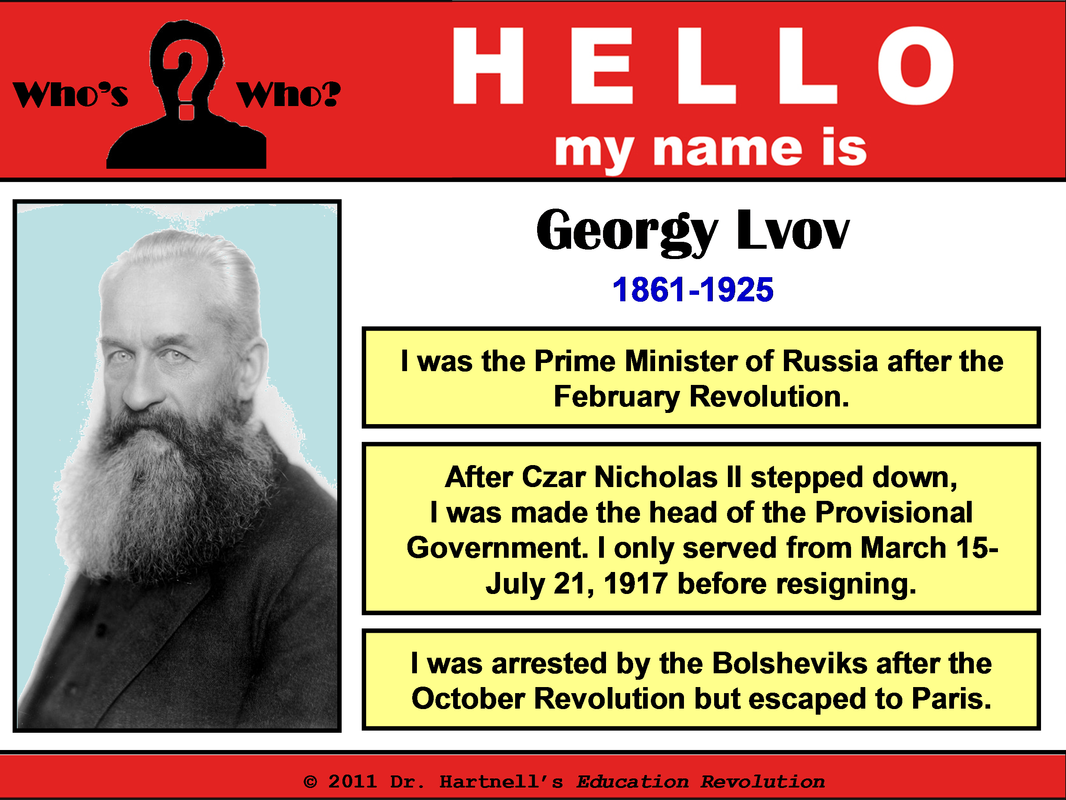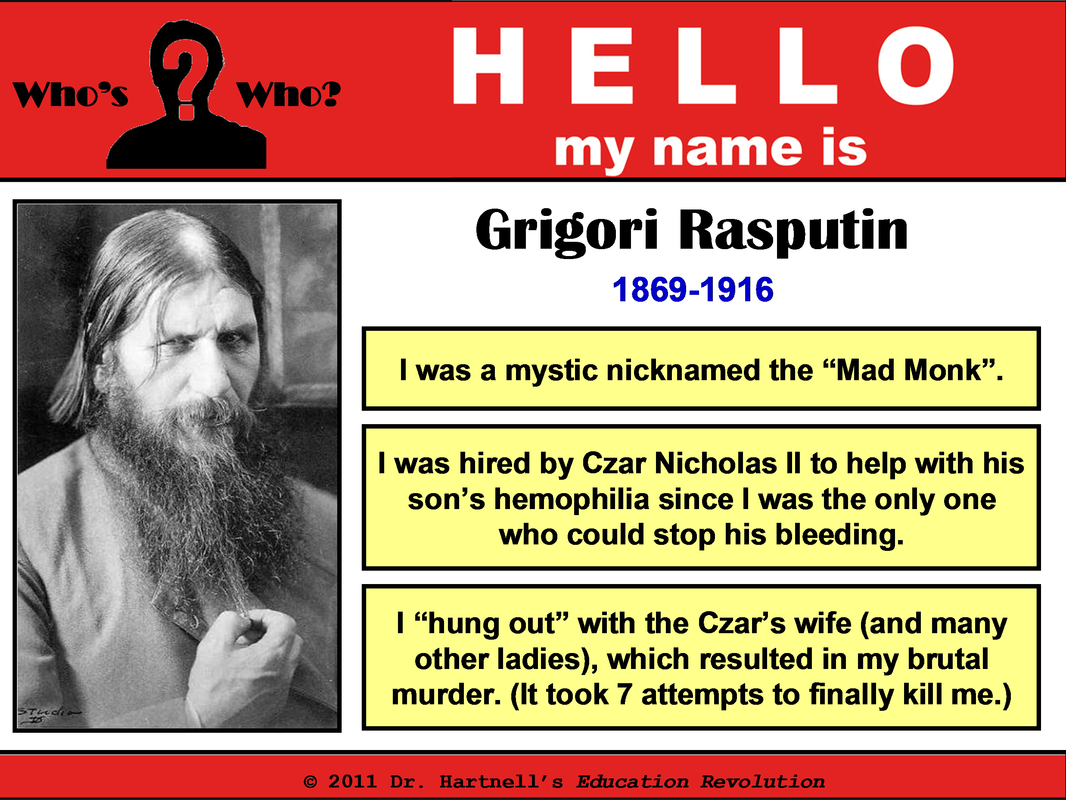Scramblin' thru... the Russian Revolution
The Red Menace...
If there's one thing Russians know how to do, it's throw a good revolution. Bolsheviks, in particular, know how to hit the "reset" button on society. They know how to shake down the establishment. They know how to get under the skin of capitalists (and FOX News anchors) everywhere. And while the fear of a Russian invasion is a thing of the past (I mean, did anyone see the remake of Red Dawn... North Koreans, really?), the history of 20th Century America is intertwined with the Soviets. They were the "yin" to our "yang". (Or were we the "yang" to their "yin"?) To quote Jerry Maguire, the Russians "complete" us.
The Russian Revolution (1917) introduced levels of violence to Europe unseen since the French Revolution (1789-1799). Made up of two individual uprisings by workers and peasants, it succeeded in overthrowing the Russian monarchy and creating the world's first Communist country. The goal of those who carried out the revolution was the creation of social equality and economic democracy in Russia. It was the crowning achievement in the "Haves vs. Have Nots" struggle. However, the Communist regime eventually turned into a dictatorship that paved the way for the Cold War between the U.S. and Soviet Union. What's Mine is Yours...
|
The Julian calendar was used in most of Europe from 45 BC until 1582 when the Gregorian calendar replaced it. Of course, not every country opted to make the "switch" in 1582. Russia, for example, did not switch to the Gregorian calendar until January 31, 1918. After making the shift, this meant that the dates of every event that came before 1918 had to be recalculated. This is why Russia's February and October Revolutions in 1917 are named for when they occurred on the old (Julian) calendar. The February Revolution lasted from February 23-27, 1917 on the old calendar, which, after the update, meant it really took place from March 8-12, 1917 in the Gregorian calendar. The October Revolution ran its course from October 24-25, 1917 in the Julian (which was really November 7-8, 1917 in the Gregorian). The Julian calendar is still used by the Berbers, an indigenous group of people in North Africa. As such, the Julian calendar is currently 13 days behind the Gregorian calendar.

The 1986 Garfield Wall Calendar. Yup, the calendar that kicked off Dr. Hartnell's "Garfield Years" from 1986-1990. Dr. Hartnell still has this calendar from when he was 8 and in the 2nd grade. Shoot, he even took it out of its plastic protector to snap a photo for all of you to enjoy. There was something special about selecting the "perfect" calendar for the upcoming year. Sort of set the tone for the next 12 months (unless you got one of the coveted 16-month calendars...). Some things are just too sentimental to throw away. [Click picture for a larger version.]
Yakov Smirnoff was the original Borat long before Sacha Baron Cohen came along. Yakov was a comedian who emigrated to America from the Soviet Union in 1977. He became an American citizen in 1986 and used his word-play in comedy performances to show how different life was under the Communist regime with life in the U.S. He would often set up his jokes by saying something to the effect of: "In America, you can always find a party. In Soviet Russia, party finds you." Along with his catch phrase of "What a country!", Yakov's popularity soared during the 1980s. He was in TV shows, on commercials, and did stand-up across the country. Not bad for a Russian immigrant-turned-American citizen during the Cold War! What a country, indeed!
In the last half of the 19th Century, the terms "socialism" and "Communism" were used interchangeably. Karl Marx and Frederic Engels put a stop to that with their Communist Manifesto in 1848. They saw socialism as the first step in the overhaul of a society. In Step #1, some of the industry and property was commonly owned but class differences remained. They reserved the term "Communism" for a final stage of society where class differences had disappeared, people lived in harmony, and government was no longer needed. In this idyllic condition, Marx and Engels wrote, abundance and social harmony would make it possible "for me to do one thing today and another
tomorrow, to hunt in the morning, fish in the afternoon, rear cattle in the evening, criticize after dinner, just as I have in mind, without ever becoming hunter, fisherman, shepherd, or critic." The work people did out of economic necessity would give way to truly voluntary activity. (In the simplest of explanations, Communism is "socialism on steroids".) You come across a lot of different "isms" when you start discussing economics. But never fear! Cowconomics will set you straight!
Why are short people always so angry? Soviet leader Vladimir Lenin was only 5'5" tall. Leon Trotsky wasn't much taller, standing in at 5'8½". But this towered over the ruthless dictator Joseph Stalin, who was between 5'2" and 5'6" (with most historians settling on 5'4".) Stalin's successor, Nikita Khrushchev, who had Americans peeing down their legs during the Cold War, was, in actuality, only 5'3". Shoot, even history's favorite "midget", Napoleon Bonaparte, was taller than Lenin and Stalin and he was only 5'6½" (which was actually taller than the average height in his day). Another of the world's tyrants, Adolf Hitler, was only 5'9".
What about today? Well, Mahmoud Ahmadinejad, the current ruler of Iran, is 5'2"... and evil as all get out. Kim Jong-Un, the dictator of North Korea who isn't a "big fan" of the U.S., is 5'5". And he took over for his father, Kim Jong-Il, who was 5'3"! Of course, by comparison, President Abraham Lincoln was 6'4" (back when the average height for an American male was 5'7"). Our current President, Barack Obama, is 6'1". And, as Dr. Hartnell (who is 6'4") has noted, tall = better. Fact. What ever happened to Czar
Nicholas after he was forced to step down as Russia's monarch? Nicholas, his wife Alexandra, and their five children were confined in the royal residence, the Alexander Palace. In April 1918, they were taken into the Ural Mountains. While the Russian Civil War raged, a decision was made to "off" the royal family. On the night of July 16, 1918, the Czar and his family, including several family servants, were machine-gunned and bayoneted to death in a basement. They had been lured to the basement under the false pretenses that a family picture was going to be taken. (Did people take a lot of pictures in the basement in Russia?) Their bodies were soaked with sulfuric acid and kerosene, burned, and buried in a shallow grave (that wasn't discovered until 1991). The killings were on the orders of Vladimir Lenin, who had embarked on a policy of mass killing in order to terrify and paralyze opposition to the Bolsheviks. In the years following the execution, several people tried to claim that they had survived the assassination and were members of the royal Romanov family. The most famous was Anna Anderson, who claimed to be the Czar's daughter Anastasia. In the end, all were proven to be impostors, as the skeletal remains of the royal family have since been recovered and identified via DNA. 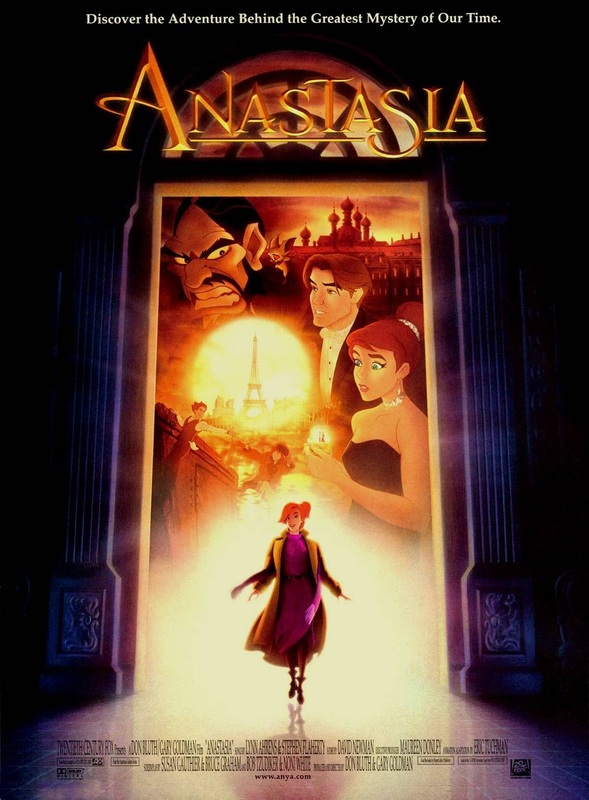
Leave it to Fox Animation Studies to muck up history (although Disney is the biggest contributor to misnomers about the past - need I mention 1995's "Pocahontas"?). In the 1997 animated fantasy "Anastasia", the main character (Anastasia) is portrayed as being the real Anastasia, even though the film was released after DNA tests proved that Anna Anderson was not Anastasia. As a result, the film is 100% pure fiction. [Click picture for a larger version.]
Grigori Rasputin (1869-1916) was a Russian zombie... or, at least, he was zombie-like. Don't know what Dr. Hartnell means? Read on...
Nicknamed the "Mad Monk", Rasputin was employed by Czar Nicholas II as a healer for his only son, Alexei, who suffered from hemophilia. (Hemophilia is a genetic disorder that hinders the body's ability to clot blood, which means people with hemophilia, if they're cut bad enough, can bleed out.) Alexei was the heir to the throne and because Rasputin was the only person that could stop the boy's bleeding, the Czar's wife, Alexandra, believed Rasputin was a holy man sent to protect Alexei. Over time, Rasputin became very close to Alexandra... and the other ladies of the court. Soon, a cult developed around Rasputin that practiced a mixture of Christianity and sexuality. Many of the noble women were believed to be in sexual relations with Rasputin (even though Rasputin was married), including Alexandra. At the end of 1916, a group of aristocrats decided that Rasputin's influence had grown too great and they were, quite simply, tired of sharing their wives. In order to save Russia, they believed, Rasputin had to die. To accomplish this, they lured Rasputin to the palace of one of the princes where he was fed cakes and red wine laced with a large amount of cyanide. Rasputin was unaffected even though he had been given enough poison to kill FIVE men. This was because Rasputin practiced mithridatism, which is where you gradually build up an immunity to poison by giving yourself non-lethal and small doses over time. (As you can imagine, this is fairly risky, especially if you don't know the difference between a millimeter and a centimeter...) Since poisoning failed, they shot Rasputin through the back with a revolver. Rasputin appeared to drop dead, so the assassins left the palace for a while. When one of the assassins went back inside to get his coat, Rasputin opened his eyes and lunged at him. At that moment, however, the others arrived and fired at Rasputin. After being hit three times in the back, he fell once more. This is where killing Rasputin became like the ending to every scary movie ever made. As they neared his body, they found that he was still alive. So, they clubbed him until he stopped moving. Some accounts say that his killers also severed his penis. This resulted in legends and claims that a Rasputin cult was in possession of the organ. (Today, a Russian museum claims to have paid $8,000 for it and has it on display.) Whatever the case, they bound Rasputin's body and wrapped him in a carpet. (This had to look like every generic cartoon version of a Mafia hit.) Then they chucked him into the frozen Neva River. To their horror, Rasputin broke out of his bonds and the carpet... but drowned. Three days later, Rasputin's body was recovered from the river. An autopsy confirmed that the cause of his death was drowning... not the poisoning, the four bullet wounds, the beating, or the castration. Saddened by the death of her friend/lover, Alexandra buried Rasputin's body in the grounds of the family's property. But, after the February Revolution, a group of workers uncovered the remains, carried them into the nearby woods, and burned them. As the body was being burned, Rasputin appeared to sit up in the fire, horrifying witnesses. (While it would be totally sweet if Rasputin went all "Walking Dead" on them, his movement can be attributed to a poorly done cremation job. Since the body was in inexperienced hands, the tendons were probably not cut before burning. Consequently, when the body was heated, the tendons shrank, forcing the legs to bend and the body to bend at the waist, resulting in it looking like he sat up. Has anyone ever seen Weekend at Bernie's?) This fueled the legends and mysteries surrounding Rasputin, which continued to live on long after his death. The official report of his autopsy disappeared during the reign of Joseph Stalin... as did research assistants who claimed to have seen it. Stalin helped close the book on the Rasputin zombie in classic Stalin-fashion. The famous Soviet flag [pictured above] that depicts the hammer and sickle intertwined beneath a yellow star outline on a red flag originates from the unique Russian unity of
the peasants (the sickle) with the workers (the hammer), who together formed the new Soviet country. The red field represented the blood that was spilled by workers around the world in the fight for their emancipation. The single yellow star was both the representation of life and the immense energy of the sun. It was empty because within it was the blood or production of the workers' struggle, which doesn't show up when placed on a red background. The star had five points to symbolize the single unity and international representation of the government (each of the five points was representative of the five known/recognized continents at that time). Contrary to popular belief, this Soviet flag was not created during the Russian Revolution. Instead, it was adopted in 1923. However, the hammer and sickle icons were frequently used by the Bolsheviks in 1917. Animal Farm (1945) is a book written by British author George Orwell. One of Orwell's most popular works, Animal Farm tells the story of a group of farm animals that rebel against their human owners and attempt to form an equal society. The themes of the book, as well as its animal characters, are based on the Russian Revolution.
What if Superman, the most iconic American superhero, was Communist and fought against the U.S.?
In 2003, Mark Millar decided to answer this question in his comic book mini-series, Superman: Red Son. The Superman we know and love landed in Smallville, Kansas where he was raised by Jonathan and Martha Kent (hence his alter ego's name Clark Kent). They nurtured him and taught him the values that he holds true his entire life. But what if he didn't land in America? What if his spaceship veered off course? It's the ultimate superhero tale of nature vs. nurture. What if he landed in the U.S.S.R. during the Cold War? In Red Son, Superman's rocket ship lands on a Ukrainian farm rather than in Kansas. This happens because Earth's rotation spins the Ukraine in the ship's path instead of Kansas. Instead of fighting for "Truth, justice, and the American Way", Superman is described in Soviet radio broadcasts as the "Champion of the common worker who fights a never-ending battle for Stalin and socialism!" Instead of being named Clark Kent like he was by his American parents, Communist Superman's "secret identity" remains a state secret. Without giving away how the series ends (it takes place from 1953-2001), the story begins when the Soviet Union unveils its newest weapon: Superman. This causes massive panic in the U.S., transforming the nuclear arms race into a "superbeing" race. Ironically, Lex Luthor is called upon by the U.S. to destroy Superman. The story spins quite a delicious web from there and later includes Wonder Woman (who hooks up with Commie Superman) and Batman (who tries to kill Commie Superman but screws up and commits suicide). Dr. Hartnell suggests snagging a copy of Superman: Red Son to find out how history is dramatically altered. Sidenote... any coincidence that Joseph Stalin's last name translates to "Man of Steel"? Weeeeird. (Granted, Stalin's birth name was Iosif Vissarionovich Dzhugashvili. Yea, I know. His name looks like I just punched a keyboard.) Without the Russians, Americans would have been deprived of two of our greatest heros: James Bond and Rocky Balboa. In the early days of the 007 franchise, Mr. Bonds was always thwarting Communist spies and nuclear plans. Classic stuff, really. And then there's the intense showdown between the American boxer Rocky and the Soviet boxer Drago in Rocky IV. Yes, without the Russians, where would all our bad guys go?
On January 31, 1990, the first McDonald's opened in Moscow. Any coincidence that Communism and the Soviet Union would collapse almost two years later? "The Golden Arches Theory of Conflict Prevention" (a.k.a. "The Big Mac Peace Theory" or "The McDonald's Peace Theory") suggests otherwise. Click here to read more.
Today, Russia (a.k.a. the Russian Federation) is a constitutional republic. The current President is Vladimir Putin. In Russia, the central government is composed of three independent branches: the Executive (made up of a President and a Prime Minister), the Legislative (made up of the Federal Assembly), and the Judicial. The government is responsible to the President, and the Executive Branch is more powerful than the other two branches.
Communism and the Soviet Union fell on December 25, 1991. Boris Yeltsin served as Russia's 1st President from 1991-1999. Vladimir Putin served as the 2nd from 2000-2008. Dmitry Medvedev served from 2000-2012 before Putin was elected again in 2012. (There's no 22nd Amendment in Russia!) |

